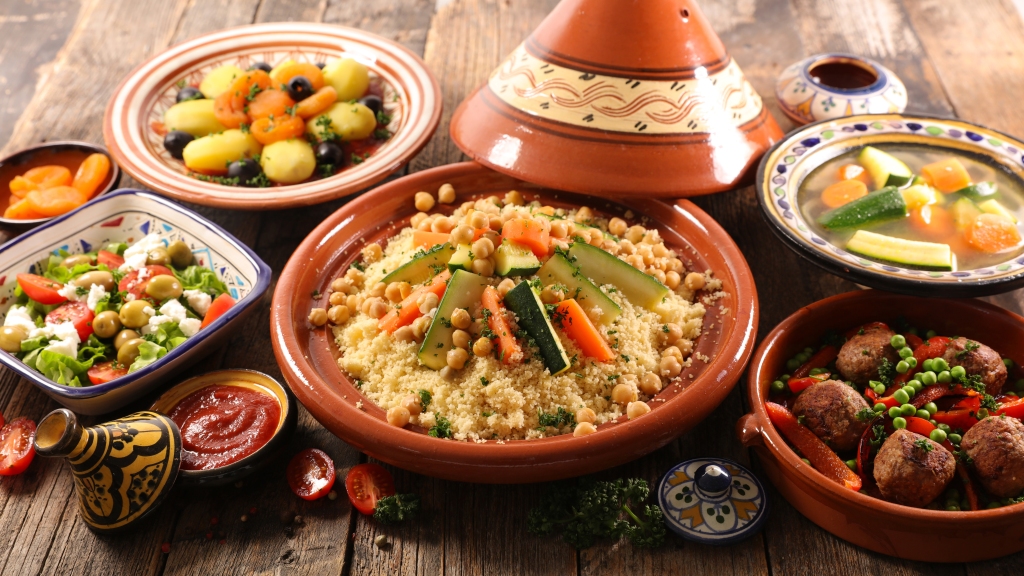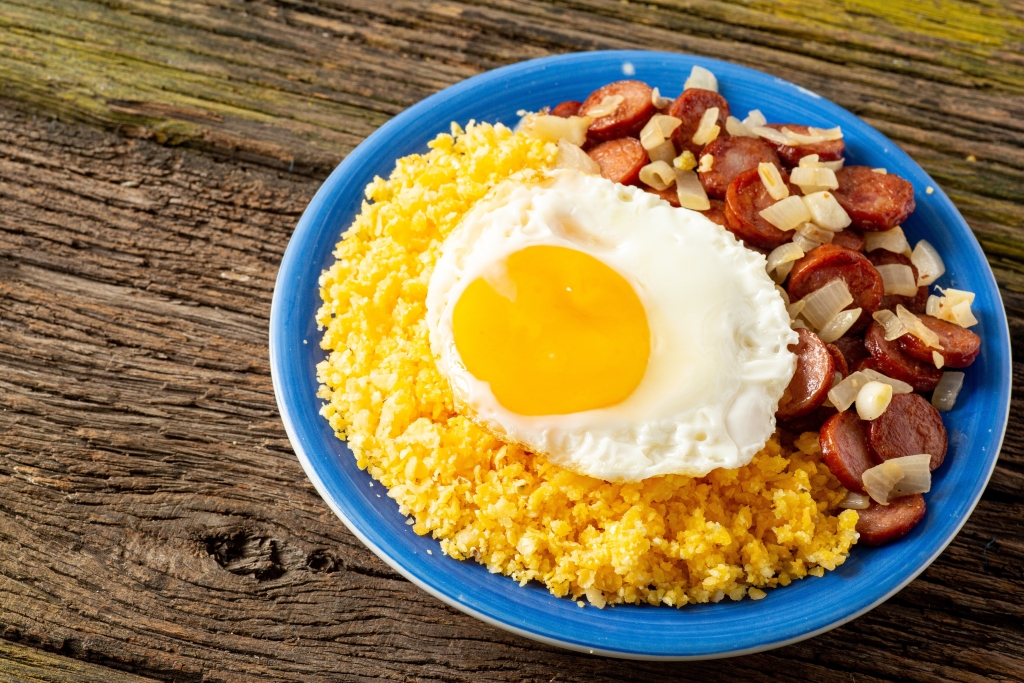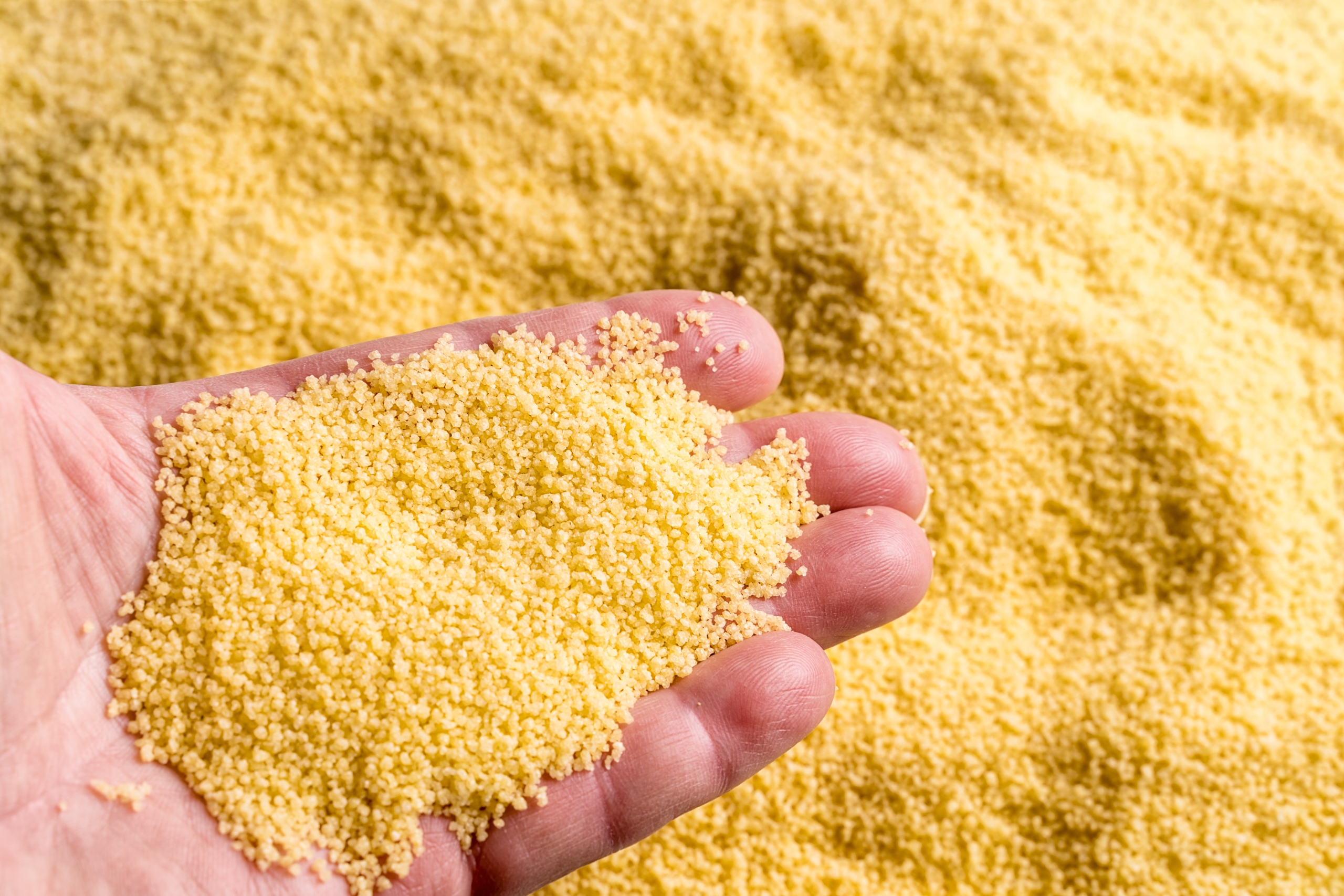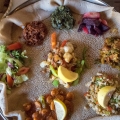In the bustling heart of Marrakech, where the air is thick with spice and the call to prayer echoes across tiled rooftops, a woman crouches before a wide metal bowl. Her hands, seasoned by time, move in patient circles. She works coarse semolina, moistening it with salted water, shaping and sifting without recipe—guided instead by inherited knowledge passed from mother to daughter. She is making couscous.
This is not merely a meal. It is a language of granules, a cultural code that ties the Amazigh peoples to their lands, to each other, and to an ancestral past.
Berber Origins of a Millennia-Old Staple
Couscous carries the imprint of an ancient civilization. Archaeological finds in the royal tombs of Massinissa, a Berber king who ruled much of the Maghreb between 238 and 149 BCE, include sieves and cooking tools unmistakably linked to couscous-making. These discoveries affirm a striking fact: couscous was part of North African life long before the Arab conquests.
Even the word kuskusu, which entered Arabic in the 13th century, likely derives from Berber linguistic roots. Couscous is not just food—it is identity, preserved through language and practice.
The Preparation Ritual: Steam and Handwork

Making couscous is a deliberate, almost meditative ritual. Durum wheat is ground into semolina, then moistened, shaped into small grains by hand, and sifted multiple times. No machinery. No shortcuts.
Traditional cooking involves steaming in three stages, each interrupted by gentle fluffing to ensure separation and lightness. Central to this process is the couscoussier—a two-tiered pot where stew simmers below while grains absorb aromatic steam above. The final dish balances earthiness and air, substance and scent.
A Dish of Many Lands, Many Stories
Morocco: Friday, Family, and Order
In Morocco, couscous marks Friday, the weekly day of communal gathering. After midday prayer, families eat from a shared dish, using hands instead of utensils. Here, the dish often features chicken over lamb, turmeric in place of tomatoes, and carefully arranged vegetables. The flavor is restrained yet layered—a quiet homage to heritage.
Tunisia: Fire and Fusion
Across the border in Tunisia, the rules shift. Couscous takes on heat and intensity through harissa, a chili paste that transforms the flavor into something bold and lasting. Fish and meat mingle, echoing the country’s coastal-inland dynamics. This version defies culinary orthodoxy, yet remains authentically Amazigh.

Algeria: Depth Without Heat
In Algeria, couscous emphasizes fragrance over fire—coriander, cinnamon, and ras el hanout create a deep, warming profile. Less spicy than its neighbors, it is dense, sustaining, and grounded. The presentation is unadorned, prioritizing essence over appearance.
Mauritania: Desert Survival
In Mauritania, couscous adapts to arid conditions. Wheat gives way to millet, sorghum, or maize. It is often served with fermented milk—an austere contrast suited to the needs of a nomadic life. Here, couscous is not only nourishment; it is resilience.
Sicily: A Cross-Mediterranean Dialogue
Couscous reached Sicily during the Arab presence in the Middle Ages. In coastal towns like Trapani and San Vito Lo Capo, it is made with fish broth and Mediterranean herbs. It speaks both Arabic and Italian—a culinary transformation that reflects exchange, not imitation.

Brazil: Echoes of Africa
In northeastern Brazil, cuscuz is corn-based, often sweetened with coconut and condensed milk. Served for breakfast or as a snack, it recalls the transatlantic crossings of enslaved Africans. Though changed, it retains the form and communal spirit of its North African ancestor.
An Intangible Cultural Heritage
In 2020, Algeria, Morocco, Tunisia, and Mauritania jointly secured UNESCO recognition for couscous as an Intangible Cultural Heritage of Humanity. The designation honors not the recipe, but the social fabric couscous supports—hospitality, memory, collective identity.
Served at weddings, funerals, and festivals alike, couscous crosses lines of class, religion, and generation. It is communal by nature, consumed from a shared dish and prepared for many.
Couscous Today: Between Trend and Tradition
Couscous is now found globally—in organic markets, fusion kitchens, and minimalist cafés. Often served cold, topped with tofu or avocado, its modern iterations may veer from tradition. Yet at its core, couscous remains a model of sustainable cuisine: durable, resource-efficient, and practical long before those became food ethics.
Couscous is a living map—from the Atlas Mountains to far-flung coasts. Each bite carries echoes of the women in Marrakech who still knead, steam, and teach. In eating couscous today, one participates in a cultural act—a gesture of remembering, of sharing, of belonging.





